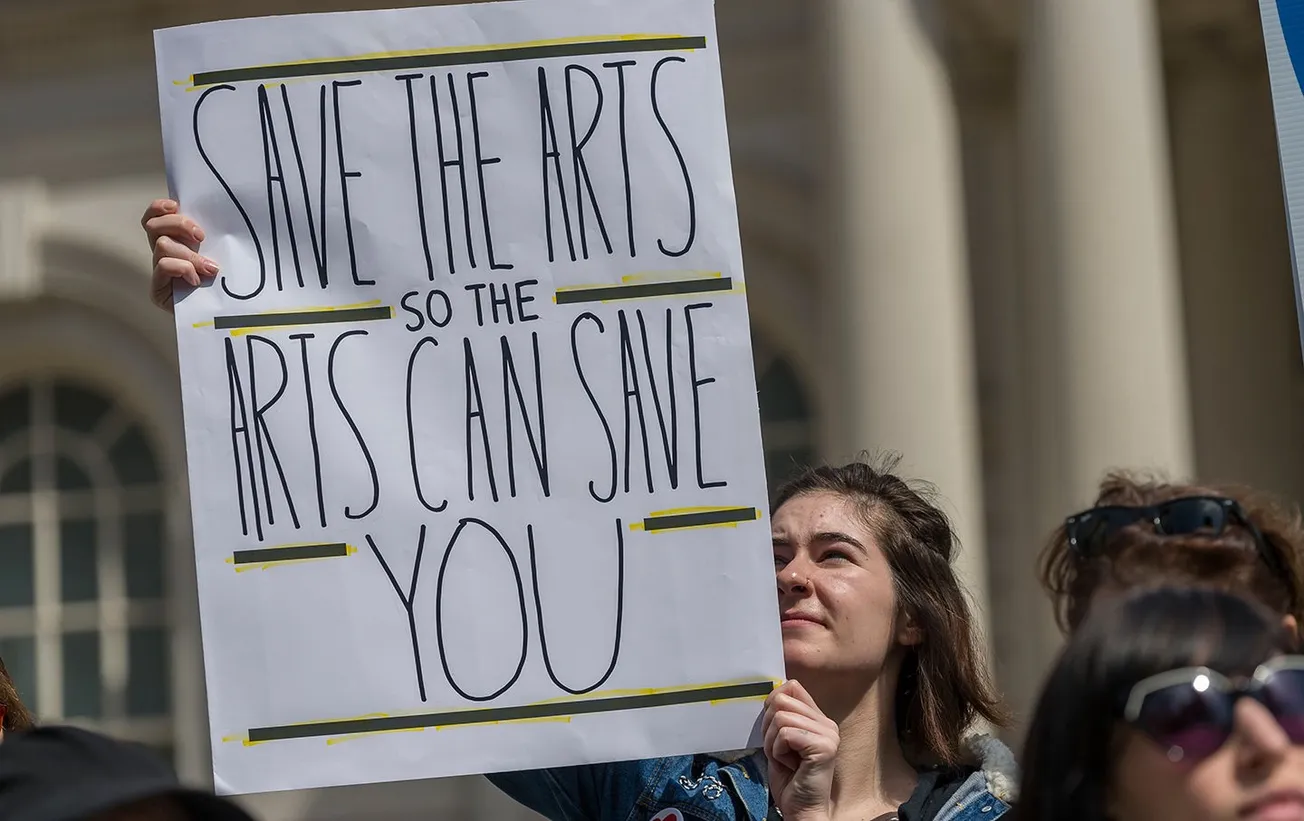Table of Contents
President Trump’s proposal to end funding for the National Endowment for Humanities and the National Endowment for the Arts has provoked ferocious backlash. At Stanford, Caroline Winterer, director of the Humanities Center, wrote a scathing letter describing potential cuts to the National Endowment for the Humanities as a “national tragedy.” An editorial in Foreign Policy hysterically described it as “an attack on reason itself.”
Concern about the arts is certainly justified in an era when many would rather watch The Bachelor rather than attend a symphony, or when underfunded public schools are forced to cut music programs. Beauty should not be replaced by practicality — as von Goethe put it, “A man should hear a little music, read a little poetry, and see a fine picture every day of his life, in order that worldly cares may not obliterate the sense of the beautiful which God has implanted in the human soul.” But just because something is valuable does not mean that it should be funded by the government.
Most educated citizens agree on the value of the arts and the humanities. Institutions like Stanford attempt to nurture an appreciation for beauty and ability to interpret the details of art, literature, music, and dance.
However if you value the arts, you should be skeptical of bureaucratic involvement. Unfortunately, a meaningful debate about government funding of the arts has been obscured by hyper-political rhetoric. Contrary to what public outrage might suggest, donations to the arts by the NEH and NEA are far surpassed by those from the private sector. In 2014, estimated gifts to the arts totalled around $17.2 billion — an increase of 9.2% from the previous year. By contrast, NEA appropriations were only $146 million in 2014 and NEH appropriations were $150 million, a total of $296 million. Federal funding to the arts thus amounted to fewer than one percent of total contributions.
But there are more fundamental reasons why, if we value the arts, we should be skeptical of bureaucratic involvement. Publicly funding the arts requires some sort of consensus on what is appropriate to fund. And it is wrong to treat extreme and controversial art as a public good, because every taxpayer must fund it regardless of moral or artistic objections. Is it really fair to force a devout Christian to pay taxes to fund a picture of Jesus Christ immersed in a jar of urine? Or to force Muslims to fund pieces that mock or ridicule Mohammed?
Controversial art should certainly exist. But the government should not force every taxpaying citizen to support it. Leaving art patronage to private benefactors avoids compelling people to fund works that violate their most fundamental moral or religious principles.
In fact, if we value the arts at all, we should be skeptical about leaving decisions about pieces’ worth to the mere 26 board members of a bureaucratic organization. By its very nature, art is subjective. Therefore, the allocation of arts funds should be as decentralized and private as possible. This would most effectively support the flourishing of the arts in the United States, instead of setting an implicit national standard on good art.
It is absurd to claim that defunding the NEA and NEH would signal a rejection of Enlightenment values of reason, liberalism, self-expression, and dissent. Decentralized allocation of arts funds, rather than a Stalin-style government-led artists regime, is the epitome of liberalism and dissent. It is the private sector that has often most effectively supported learning in our society. Stanford students might be surprised that money-focused Silicon Valley cares about the humanities: much of the 2014 rise in gifts to the arts was driven by an influx of “mega-gifts” by young tech entrepreneurs.
Defunding the NEA and NEH could save $3.2 billion between 2016 and 2025, which we could use to address the national opioid epidemic, send malaria nets to developing countries, or buy around 64 million electric piano keyboards. The arts are doing just fine without an onerous federal government regime determining their value. Without the arts bureaucracy, the American artistic scene would return to its pre-1965 status, composed of diverse and flourishing artists independent of bureaucratic influence. This week, our lawmakers should signal their support for free and diverse art by ending support for government arts programs.





